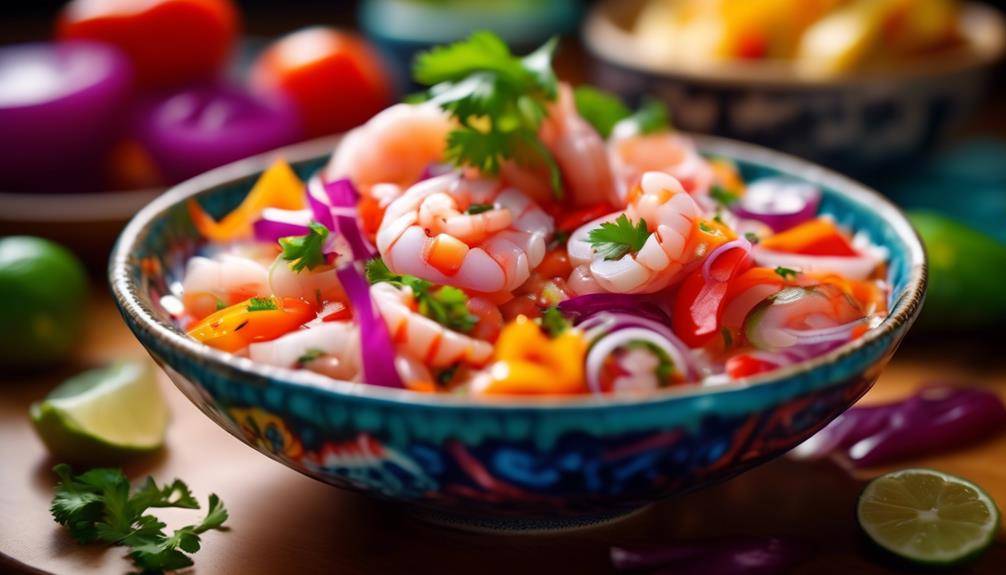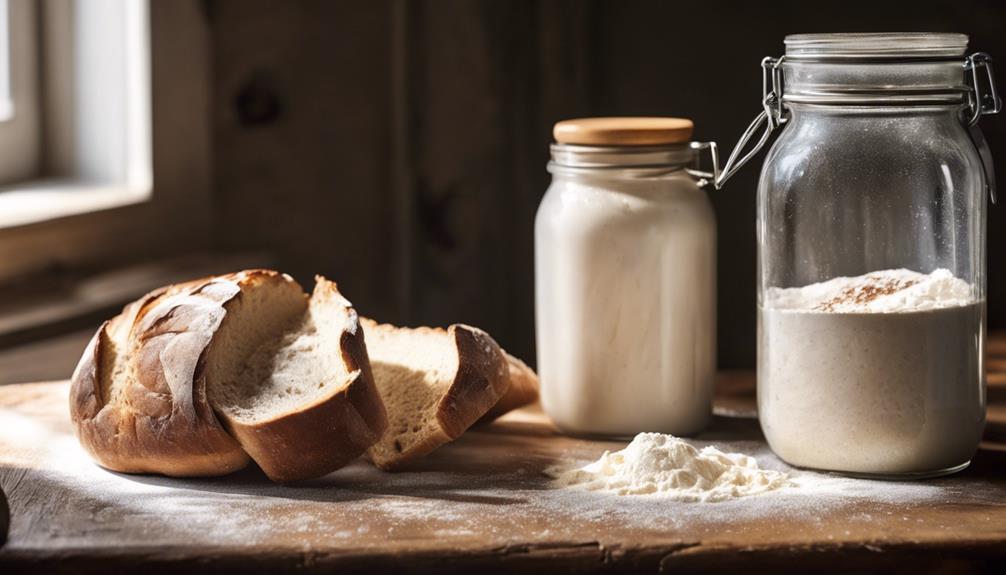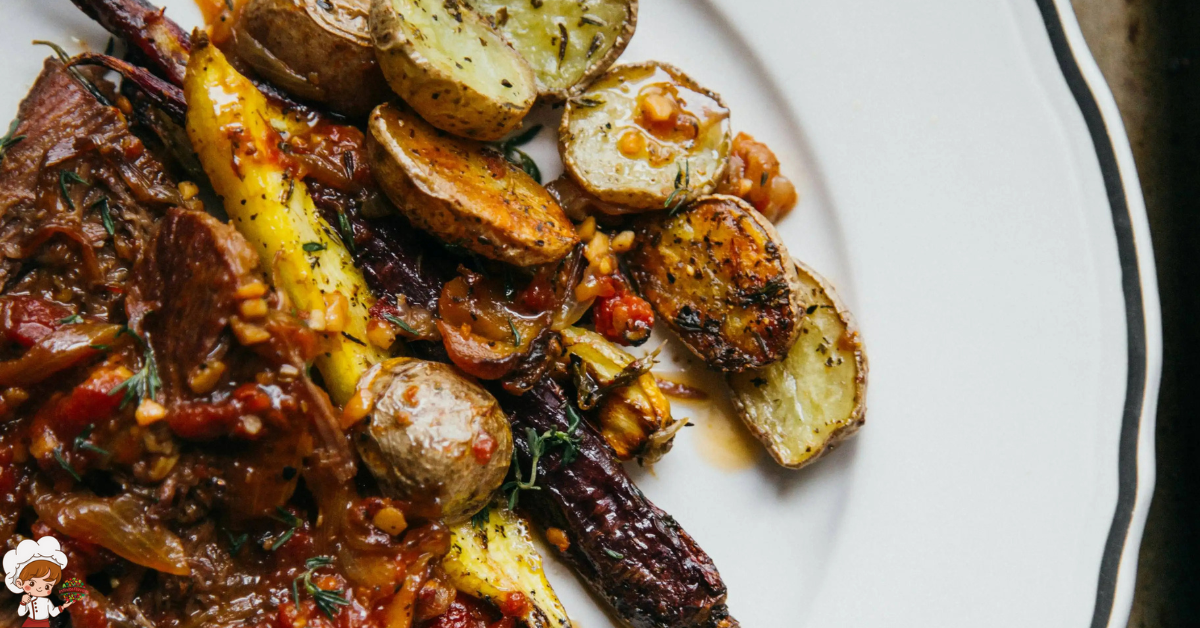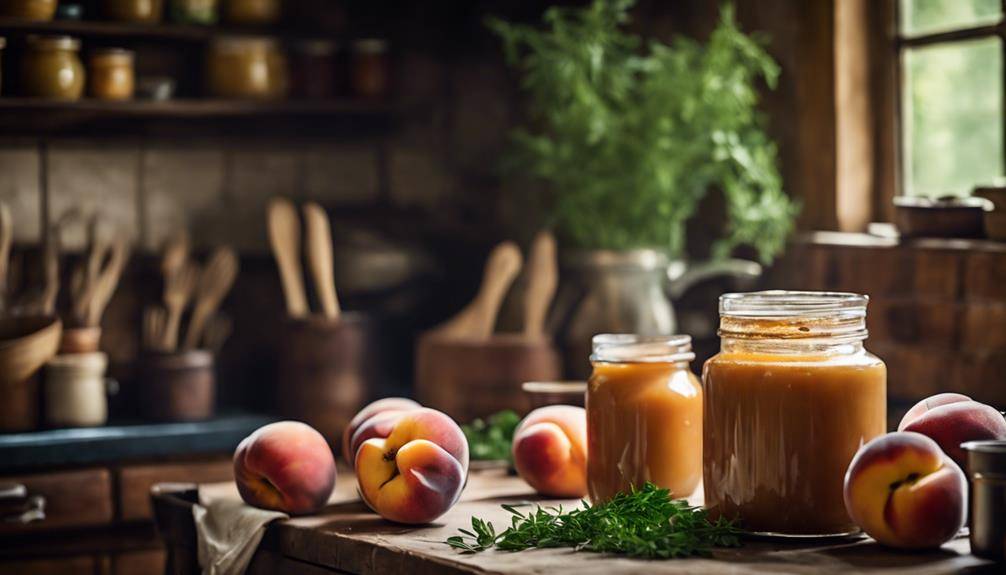Popular Peruvian Cuisine And Its Flavor Profiles

Peruvian Cuisine And Its Flavor Profiles; Step into the world of Peruvian cuisine, where the delicate meets the robust, the familiar intertwines with the exotic, and the flavors dance harmoniously on your palate. From the coastal delicacies that showcase the bounty of the sea to the comforting Andean dishes that warm the soul, Peruvian cuisine offers a tantalizing array of taste experiences. But it doesn’t stop there.
The flavors of the Amazonian rainforest, the fusion of indigenous ingredients with Spanish influences, the spicy and aromatic sauces that add a kick to every bite – there is so much more to discover. So, prepare yourself for a culinary adventure that will take you from the vibrant streets of Lima to the hidden gems of the Peruvian countryside. Are you ready to embark on a journey of flavor exploration?
Coastal Delicacies
When exploring the culinary delights of Peruvian cuisine, you cannot miss the exquisite flavors and textures of the coastal delicacies. Peru is blessed with an extensive coastline that stretches over 2,400 kilometers, which means abundant access to fresh seafood and an abundance of inspiration for coastal fusion dishes and traditional seafood recipes. The coastal region of Peru is known for its diverse marine life, and this has greatly influenced the local cuisine.
One popular coastal fusion dish that you must try is ceviche. This refreshing and tangy dish consists of fresh raw fish or seafood marinated in lime juice and mixed with onions, chili peppers, and cilantro. The acidity of the lime juice “cooks” the fish, resulting in a burst of flavors that are both delicate and invigorating.
Another must-try dish is tiradito. Similar to ceviche, tiradito features thinly sliced raw fish, but it is served with a spicy, creamy sauce made from aji amarillo peppers and blended with lime juice, garlic, and Peruvian spices. The combination of the delicate fish and the bold flavors of the sauce creates a harmonious balance that is truly unforgettable.
For those seeking a taste of tradition, Peruvian coastal cuisine offers a variety of traditional seafood recipes. One such dish is arroz con mariscos, a flavorful rice dish cooked with an array of fresh seafood, such as shrimp, mussels, and squid. The rice is flavored with a rich seafood broth, garlic, onions, and aji amarillo, a Peruvian yellow chili pepper that adds a distinctive flavor and mild heat to the dish.
Andean Comfort Foods
When it comes to traditional Andean dishes, the cuisine is known for its hearty comfort food that brings warmth and satisfaction. These indigenous culinary delights are a reflection of the rich cultural heritage of the Andean region, with flavors that have been passed down through generations. From dishes like pachamanca, a slow-cooked meat and vegetable stew, to humitas, a savory corn tamale, Andean comfort foods provide a taste of tradition and a comforting experience for food lovers.
Traditional Andean Dishes
Traditional Andean Dishes, known for their rich flavors and comforting qualities, showcase the culinary heritage of the Andean region. These dishes are deeply rooted in the traditional Andean farming techniques that have been passed down through generations. The cultural significance of these dishes cannot be overstated, as they represent the connection between the Andean people and their land.
One such dish is the hearty and satisfying quinoa soup. Quinoa, a staple of Andean cuisine, is cooked with flavorful vegetables and spices to create a nourishing and delicious soup. Another popular dish is the humitas, which are savory corn tamales filled with a variety of ingredients such as cheese, meat, or vegetables. These dishes not only provide sustenance but also offer a sense of comfort and familiarity to those who enjoy them.
Traditional Andean dishes are a testament to the resilience and resourcefulness of the Andean people. They reflect the harmony between nature and culture, and the deep appreciation for the bountiful flavors that the Andean region has to offer.
Hearty Comfort Food
As we continue exploring the culinary heritage of the Andean region, we now turn our attention to the irresistible allure of Andean Comfort Foods, known for their hearty and comforting qualities that provide a sense of nourishment and satisfaction. Hearty stews are a prominent feature of Andean comfort food, with their rich flavors and warm, comforting textures.
One popular example is the traditional Peruvian dish called “cuy chactado,” which consists of fried guinea pig served with potatoes and vegetables. This hearty stew is a favorite among locals and visitors alike, offering a satisfying and filling meal. In addition to hearty stews, traditional desserts are also a highlight of Andean comfort food. From creamy rice pudding known as “arroz con leche” to sweet potato cake called “torta de camote,” these desserts provide a delightful ending to a comforting Andean meal.
Indigenous Culinary Delights
Indulge in the indigenous culinary delights of the Andean region, where vibrant flavors and ancient recipes come together to create a truly unforgettable dining experience. The Andean people have a deep connection to their land, which is reflected in their cooking techniques and traditional ingredients. One such dish is the famous “chupe de camarones,” a hearty shrimp stew simmered with potatoes, corn, and a variety of spices.
The Andean farmers also cultivate a unique variety of potatoes, including the purple “papa nativa” and the yellow “papa amarilla,” which add a distinct flavor to dishes like “pachamanca.” This traditional cooking technique involves burying meat, potatoes, and vegetables in the ground with hot stones, resulting in a succulent and smoky flavor. Other indigenous delicacies include “rocoto relleno,” a spicy stuffed pepper, and “cuy,” or guinea pig, which is roasted whole for a crispy and savory treat. Immerse yourself in the rich culinary heritage of the Andean region and savor the traditional ingredients and cooking techniques passed down through generations.
Amazonian Exotic Flavors
With its rich biodiversity and unique culinary traditions, the vibrant flavors of the Amazon rainforest captivate the palate and offer a truly immersive gastronomic experience. Amazonian food is known for its exotic flavors that come from the diverse array of ingredients found in the region. From the dense jungles to the flowing rivers, the Amazon rainforest provides a bounty of ingredients that have been used for centuries by indigenous communities to create delicious and distinctive dishes.
One of the key elements of Amazonian cuisine is the use of local fruits and vegetables. The region is home to a wide variety of fruits such as camu camu, a small round fruit with a tangy flavor, and aguaje, a fruit with a buttery texture and a sweet taste. These fruits are often used in refreshing juices and desserts, adding a burst of flavor to the dishes.
Another important aspect of Amazonian cuisine is the use of ingredients found in the rivers and streams of the rainforest. Fish, such as paiche and pirarucu, are commonly used in Amazonian dishes. These fish have a unique taste and texture, and are often cooked with local herbs and spices to enhance their flavors. Additionally, the region is also known for its exotic meats, including wild boar and capybara, which are often prepared in stews or grilled to perfection.
The culinary traditions of the Amazon rainforest are deeply rooted in the culture of the indigenous communities that inhabit the region. These communities have developed their own techniques and cooking methods, passed down through generations, which contribute to the distinct flavors of Amazonian cuisine. From traditional cooking methods such as grilling over open fires to the use of local herbs and spices, Amazonian food is a reflection of the rich cultural heritage of the region.
Fusion of Indigenous and Spanish Influences
When it comes to Peruvian cuisine, the fusion of indigenous and Spanish influences is a key aspect that has shaped the flavor profiles of the dishes. This historical culinary amalgamation has resulted in a unique blend of flavors that showcases the rich diversity of ingredients and techniques. From the use of native ingredients like quinoa, potatoes, and ají peppers, to the introduction of European ingredients like wheat, rice, and meats, the indigenous-Spanish fusion flavors in Peruvian cuisine offer a delightful and harmonious balance that is truly one-of-a-kind.
Historical Culinary Amalgamation
The fusion of indigenous ingredients and Spanish culinary techniques in Peruvian cuisine has resulted in a rich and diverse flavor profile that captures the essence of the country’s historical culinary amalgamation. Peruvian cuisine is a unique blend of flavors, combining traditional recipes with culinary influences from both indigenous cultures and Spanish colonizers. This amalgamation of culinary traditions has created a vibrant and dynamic food culture in Peru.
Indigenous ingredients such as quinoa, potatoes, and corn are combined with Spanish cooking techniques like sautéing, frying, and braising to create dishes that are both familiar and distinct. The use of spices and herbs, such as aji peppers and cilantro, adds depth and complexity to the dishes. The result is a cuisine that is deeply rooted in history, reflecting the cultural diversity of Peru and its culinary heritage.
Indigenous-Spanish Fusion Flavors
Peruvian cuisine’s rich and diverse flavor profile is a result of the fascinating fusion between indigenous ingredients and Spanish culinary techniques, creating a harmonious blend that captures the essence of Peru’s historical culinary amalgamation. The indigenous culinary innovations, combined with the Spanish influence, have led to the creation of unique and vibrant flavors that have become synonymous with Peruvian cuisine. The cultural significance of this fusion cuisine cannot be overstated, as it represents the convergence of two distinct culinary traditions, each with its own history, ingredients, and techniques.
The indigenous ingredients, such as corn, potatoes, and quinoa, are infused with Spanish cooking methods, resulting in dishes that are both familiar and exotic. This fusion not only reflects the historical and cultural influences of Peru, but it also showcases the creativity and adaptability of its people in blending different culinary traditions to create something truly remarkable.
Spicy and Aromatic Sauces
Spicy and aromatic sauces in Peruvian cuisine add a burst of flavor and depth to dishes, enhancing the overall dining experience. These sauces are made using traditional Peruvian spices and are often used as condiments or marinades. Here are four examples of popular spicy and aromatic sauces in Peruvian cuisine:
- Aji Amarillo Sauce: Made from the vibrant and spicy aji amarillo pepper, this sauce is a staple in Peruvian cuisine. It adds a bold and fiery flavor to dishes and is commonly used in ceviche, grilled meats, and stews. The aji amarillo pepper is known for its fruity undertones and intense heat.
- Rocoto Sauce: The rocoto pepper is one of the spiciest peppers in Peru, and its sauce delivers a fiery kick to any dish. This sauce is often mixed with other ingredients like garlic, onion, and lime juice to balance out the heat. It pairs well with grilled meats, potatoes, and seafood.
- Huancaina Sauce: This creamy and flavorful sauce is made from a blend of aji amarillo peppers, cheese, evaporated milk, and crackers. It has a smooth texture and a slightly spicy taste. Huancaina sauce is commonly served over boiled potatoes and garnished with olives and hard-boiled eggs.
- Salsa Criolla: This tangy and aromatic sauce is made from thinly sliced red onions marinated in lime juice and vinegar. It is often seasoned with aji amarillo peppers, cilantro, and salt. Salsa criolla is a versatile sauce that adds brightness and acidity to various dishes, such as grilled meats, sandwiches, and ceviche.
These spicy and aromatic sauces are essential components of Peruvian cuisine, adding layers of flavor and complexity to the dishes they accompany. Whether you’re looking for a fiery kick or a tangy twist, these sauces will surely elevate your dining experience.
Unique Use of Potatoes
Potatoes in Peruvian cuisine are transformed into a myriad of unique and delicious dishes, showcasing their versatility and importance in the culinary tradition. Peru is known for its wide variety of potatoes, with over 3,000 different native potato varieties grown in the country. Each variety has its own distinct flavors and textures, allowing for the creation of truly unique potato dishes.
One popular dish that highlights the versatility of potatoes is causa. This dish consists of mashed potatoes mixed with lime juice and ají amarillo, a Peruvian yellow chili pepper, resulting in a vibrant and tangy flavor. The potato mixture is then layered with various fillings, such as avocado, chicken, or seafood, creating a colorful and flavorful dish that is both satisfying and visually appealing.
Another notable potato dish is Papa Rellena, which translates to “stuffed potato.” In this dish, mashed potatoes are mixed with seasonings and then shaped into balls. These potato balls are then stuffed with a flavorful filling, such as ground beef or cheese, before being deep-fried to a golden crisp. The result is a crispy exterior with a creamy and savory interior, making it a popular street food snack in Peru.
Peruvian cuisine also showcases the unique flavors of potatoes through dishes like Papa a la Huancaina. This dish features boiled potatoes topped with a sauce made from queso fresco, a fresh white cheese, blended with ají amarillo, evaporated milk, and crackers. The sauce has a creamy and slightly spicy flavor, which complements the earthy taste of the potatoes perfectly.
Peruvian cuisine’s unique use of potatoes allows for a wide range of flavors and textures to be explored. From the tangy and vibrant causa to the crispy and savory Papa Rellena, these dishes highlight the versatility and importance of potatoes in Peruvian culinary tradition.
Seafood Galore
With Peru’s abundant coastline and rich marine biodiversity, it comes as no surprise that seafood plays a prominent role in the country’s culinary landscape. The coastal seafood in Peru is fresh, flavorful, and diverse, making it a delight for seafood lovers. From fish to shellfish, Peru offers a wide variety of options that are skillfully prepared to enhance their natural flavors. Here are four traditional seafood dishes that you must try when visiting Peru:
- Ceviche: This iconic dish is a true representation of Peruvian cuisine. Fresh fish or shellfish is marinated in lime juice, mixed with onions, cilantro, and aji pepper, and served with sweet potato and corn. The citrusy acidity of the lime juice perfectly balances the rich and tender seafood, creating a refreshing and tangy combination.
- Tiradito: Similar to ceviche, tiradito is a raw seafood dish that is thinly sliced and served with a spicy and tangy sauce made from aji amarillo, lime juice, and olive oil. The delicate slices of fish or shellfish are beautifully arranged on a plate, making it a visually appealing dish as well.
- Jalea: This crispy and indulgent dish showcases the influence of Peruvian cuisine from other cultures. It consists of a mixture of battered and fried seafood, such as fish, shrimp, and calamari, served with yucca fries and salsa criolla. The golden and crunchy exterior contrasts with the tender seafood inside, creating a delightful texture.
- Arroz con Mariscos: This flavorful rice dish is a seafood lover’s dream. It is made with a mix of seafood, such as shrimp, mussels, and squid, cooked with rice, onions, garlic, aji amarillo, and a hint of tomato. The result is a savory and aromatic dish that will transport you to the coast of Peru.
When it comes to coastal seafood, Peru’s traditional dishes are truly exceptional. Each dish showcases the country’s culinary expertise and its appreciation for the bounties of the sea. So, don’t miss the opportunity to indulge in these delectable seafood creations when you visit Peru.
Ceviche, the Iconic Dish
Get ready to savor the traditional recipe variations, fresh and tangy flavors, and the culinary techniques and history behind the iconic dish of Peruvian ceviche. From the coastal regions to the bustling cities, ceviche is a beloved dish that showcases the vibrant flavors of Peru. Whether it’s made with fish, seafood, or even vegetarian ingredients, ceviche is a culinary masterpiece that will leave you craving for more.
Traditional Recipe Variations
In Peruvian cuisine, the traditional recipe variations of ceviche, the iconic dish, showcase a harmonious blend of fresh seafood, vibrant citrus juices, and a medley of herbs and spices. These variations are a testament to the rich culinary history of Peru, incorporating indigenous culinary techniques and flavors. Here are four traditional recipe variations of ceviche:
- Classic Ceviche: This variation features raw fish or seafood marinated in lime or lemon juice, mixed with onions, cilantro, and Peruvian chili peppers for a spicy kick.
- Mixed Seafood Ceviche: This variation combines an array of seafood such as shrimp, octopus, and squid, creating a diverse and flavorful ceviche experience.
- Tiradito: Similar to ceviche, tiradito is made by thinly slicing raw fish and dressing it with a spicy citrus-based sauce. It offers a delicate and refreshing flavor.
- Ceviche de Conchas Negras: This unique variation highlights black scallops, marinated with lime juice and mixed with red onions, rocoto chili pepper, and corn. It offers a sweet and tangy taste with a hint of heat.
These traditional recipe variations of ceviche demonstrate the versatility and creativity of Peruvian cuisine, making it a beloved dish both locally and internationally.
Fresh and Tangy Flavors
The diverse and flavorful traditional recipe variations of ceviche showcase the fresh and tangy flavors that make it the iconic dish of Peruvian cuisine. Ceviche, a dish made with fresh seafood marinated in citrus juices, is known for its vibrant and zesty taste. The combination of the tangy citrus flavors and the natural sweetness of the seafood creates a refreshing and light dish that is perfect for warm Peruvian weather.
The citrus juices, usually from limes or lemons, not only add a burst of acidity, but also serve as a natural cooking agent, effectively “cooking” the seafood without heat. This unique preparation method preserves the delicate texture and taste of the seafood, resulting in a dish that is both flavorful and satisfying. Ceviche truly embodies the essence of Peruvian cuisine with its fresh and tangy flavors.
Culinary Techniques and History
Ceviche, the iconic dish of Peruvian cuisine, showcases a rich culinary history and a unique technique that sets it apart from other seafood dishes. This traditional dish reflects the deep-rooted culinary traditions and cultural influences of Peru. Here are four key aspects of ceviche that contribute to its significance:
- Freshness: Ceviche is made by marinating raw fish or seafood in citrus juices, such as lime or lemon, which effectively “cooks” the protein without heat. This technique ensures that the dish maintains a vibrant and fresh flavor.
- Flavor profile: The combination of tangy citrus, spicy rocoto chili peppers, and aromatic herbs like cilantro creates a complex and refreshing flavor profile that is characteristic of Peruvian cuisine.
- Regional variations: Each region in Peru has its own unique way of preparing ceviche, incorporating local ingredients and flavors. For example, in Lima, the capital city, ceviche is typically served with sweet potatoes and corn, while in the northern regions, it may include mango or passion fruit.
- Historical significance: Ceviche dates back to pre-Columbian times when the Incas used to marinate their fish in fermented corn juice. Over time, the dish has evolved and adapted to incorporate ingredients brought by Spanish conquistadors and African slaves, resulting in the diverse and flavorful ceviche we know today.
Causa, a Colorful Delight
With its vibrant colors and tantalizing flavors, Causa is a true culinary masterpiece of Peruvian cuisine. This traditional Peruvian dish is known for its colorful presentation and the meticulousness of its preparation. Causa is a layered dish made with mashed yellow potatoes, lime juice, and ají amarillo, a Peruvian yellow chili pepper. It is typically filled with a variety of ingredients such as chicken, tuna, avocado, or shrimp, creating a harmonious blend of flavors.
The colorful presentation of Causa is a feast for the eyes. The dish is often served in individual portions, with each layer of potato carefully stacked on top of one another. The vibrant yellow color of the potatoes is enhanced by the bright hues of the filling ingredients. The dish is then garnished with a variety of toppings, such as olives, hard-boiled eggs, and rocoto, a spicy Peruvian red chili pepper. The combination of colors creates a visually stunning dish that is as beautiful as it is delicious.
The preparation of Causa is a labor of love. The potatoes are boiled and then mashed with lime juice, creating a creamy and tangy base. The ají amarillo adds a subtle heat and a distinct flavor to the dish. Each layer is carefully assembled, with the filling ingredients placed strategically to ensure a perfect balance of flavors in every bite. The final result is a dish that is not only visually appealing but also bursting with flavor.
Whether enjoyed as an appetizer or a main course, Causa is a delightful addition to any meal. Its vibrant colors and traditional preparation make it a true standout in the world of Peruvian cuisine. So, next time you have the opportunity, be sure to indulge in this colorful delight and experience the unique flavors of Causa for yourself.
Anticuchos, Grilled Perfection
Get ready to tantalize your taste buds with the succulent flavors of Anticuchos, a grilled perfection that will leave you craving for more. The secret behind the mouthwatering taste lies in the marinade, where a carefully crafted combination of spices and seasonings infuses the meat with an explosion of flavors. From the tanginess of vinegar to the smoky notes of cumin, each bite is a delightful journey through unique ingredient combinations that make Anticuchos a true culinary masterpiece.
Marinade Secrets
For the perfect grilled Peruvian delight, discover the secret behind the irresistible flavor of Anticuchos marinade. The marinade techniques used in Peruvian cuisine are designed to infuse maximum flavor into the meat, resulting in a tantalizing taste experience. Here are four key elements of a successful Anticuchos marinade:
- Achiote paste: This vibrant red mixture made from ground annatto seeds adds a distinctive earthy flavor to the marinade.
- Garlic and cumin: These aromatic ingredients provide a depth of flavor and enhance the overall taste profile.
- Vinegar or lime juice: The acidity from these citrus elements helps to tenderize the meat and adds a tangy brightness to the marinade.
- Soy sauce: A surprising addition that brings a touch of umami to the marinade, enhancing the overall savory notes.
Unique Ingredient Combinations
To further explore the tantalizing flavors of Peruvian cuisine, let’s now turn our attention to the unique ingredient combinations that make Anticuchos a grilled perfection. Anticuchos are skewers of marinated meat, typically made from beef heart, that are grilled to perfection. What makes Anticuchos truly special are the traditional recipe variations that incorporate a variety of unique ingredient combinations. The marinade for Anticuchos usually consists of vinegar, garlic, cumin, and aji panca, a Peruvian red chili pepper.
However, the choice of meat and additional ingredients can vary based on personal preference and regional traditions. Some popular variations include using chicken, pork, or seafood instead of beef, and adding ingredients like onions, peppers, and herbs to enhance the flavor profile. These unique ingredient combinations contribute to the rich and diverse taste of Anticuchos, making them a beloved dish in Peruvian cuisine.
Lomo Saltado, a Stir-Fry Sensation
Lomo Saltado, a sensational stir-fry dish that combines tender beef, vibrant vegetables, and bold flavors, is a beloved staple of Peruvian cuisine. This mouthwatering dish showcases the fusion of Chinese and Peruvian culinary traditions, resulting in a unique and delicious flavor profile. Here are four reasons why Lomo Saltado has gained such popularity:
- Marinade techniques: The secret to the tender and flavorful beef in Lomo Saltado lies in its marinade. The beef is typically marinated in a mixture of soy sauce, vinegar, garlic, cumin, and other spices. This marinade not only infuses the meat with a savory taste but also helps to tenderize it, ensuring a melt-in-your-mouth experience.
- Vibrant vegetables: Lomo Saltado is not just about the beef; it also features a colorful medley of vegetables. Sliced onions, tomatoes, and bell peppers are stir-fried alongside the beef, adding a burst of freshness and crunch to the dish. The combination of tender meat and crisp vegetables creates a satisfying texture contrast.
- Street food popularity: Lomo Saltado has not only captured the hearts of Peruvians but has also become a beloved street food dish. Its flavorful aroma and enticing sizzle as it is cooked in a hot wok make it an irresistible choice for those seeking a quick and delicious meal on the go.
- Bold flavors: The bold flavors of Lomo Saltado come from the seasoning blend used in the dish. Along with the marinade, a touch of soy sauce, red wine vinegar, and aji amarillo, a Peruvian yellow chili pepper, are added to enhance the umami and spiciness of the dish. The result is a harmonious blend of flavors that tantalize the taste buds.
Aji Amarillo, the Flavorful Pepper
The flavorful journey continues as we explore the distinct taste of Aji Amarillo, a pepper that adds a unique and vibrant kick to Peruvian cuisine. Aji Amarillo, also known as the yellow chili pepper, is a staple ingredient in many Peruvian dishes. Its bright yellow color and fiery flavor make it easily recognizable and highly sought after by food enthusiasts around the world.
One of the most notable features of Aji Amarillo is its health benefits. This pepper is packed with vitamins A and C, which are essential for boosting the immune system and promoting overall health. Additionally, Aji Amarillo contains capsaicin, a compound that has been shown to have anti-inflammatory and pain-relieving properties. Including Aji Amarillo in your diet can help in reducing inflammation and alleviating common ailments.
When it comes to cooking with Aji Amarillo, the possibilities are endless. This pepper can be used to add heat and flavor to a wide range of dishes, from soups and stews to marinades and sauces. Aji Amarillo paste is a popular condiment in Peruvian cuisine and is often used as a base for various dishes, such as ceviche and causa. Its vibrant color and bold taste make it a versatile ingredient that can elevate any recipe.
If you’re looking to incorporate Aji Amarillo into your cooking, there are plenty of recipes to choose from. Try making Aji de Gallina, a traditional Peruvian dish that features shredded chicken simmered in a creamy Aji Amarillo sauce. Or, if you’re in the mood for something lighter, whip up a batch of Aji Amarillo salsa to serve as a dip or topping for grilled meats and vegetables.
Chicha Morada, a Refreshing Drink
Chicha Morada, a vibrant and refreshing Peruvian drink, tantalizes the taste buds with its unique blend of flavors. This purple corn-based beverage is a popular choice among locals and tourists alike, especially during hot summer days. Here are four reasons why Chicha Morada stands out among other Peruvian street food:
- Rich in antioxidants: Chicha Morada owes its deep purple color to the purple corn, which is packed with antioxidants. These powerful compounds help protect the body against oxidative stress and can contribute to overall health and well-being.
- Natural anti-inflammatory properties: The main ingredient in Chicha Morada, purple corn, contains anti-inflammatory compounds that can help reduce inflammation in the body. This can be particularly beneficial for those suffering from conditions such as arthritis or inflammatory bowel disease.
- Potential cardiovascular benefits: Studies have suggested that the anthocyanins found in purple corn may have positive effects on cardiovascular health. These compounds have been linked to lower blood pressure and improved blood flow, reducing the risk of heart disease.
- Digestive health support: Chicha Morada contains natural fibers from the purple corn, which can aid in digestion and promote a healthy gut. The drink is also often flavored with ingredients like cinnamon and cloves, which have been traditionally used to soothe the digestive system.
Chirimoya, a Tropical Delight
With its creamy texture and sweet, tropical flavor, Chirimoya is a delightful fruit that captures the essence of the Peruvian jungle. Known as the “custard apple” or “cherimoya” in English, this tropical fruit is native to the Andean region and has been enjoyed for centuries. The Chirimoya tree thrives in the warm and humid climate of Peru, making it a staple in Peruvian cuisine.
Chirimoya is not only delicious but also packed with health benefits. This tropical fruit is low in calories and high in fiber, making it a great option for those looking to maintain a healthy weight. It is also a good source of vitamin C, which is essential for a strong immune system and healthy skin. In addition, Chirimoya contains potassium, magnesium, and vitamin B6, all of which play important roles in maintaining proper bodily functions.
One of the most remarkable aspects of Chirimoya is its unique flavor profile. The fruit has a creamy, custard-like texture that melts in your mouth, and its taste is often described as a combination of banana, pineapple, and strawberry. The sweetness is balanced with a hint of acidity, creating a truly delightful experience for your taste buds.
In Peru, Chirimoya is commonly used in desserts, such as mousses, ice creams, and pies. Its creamy texture makes it perfect for creating smooth and velvety treats. However, it can also be enjoyed on its own, simply by scooping out the flesh with a spoon.
Peruvian Street Food
Peruvian street food tantalizes the senses with a vibrant array of flavors and aromas. As you wander through the bustling streets of Peru, you’ll be enticed by the mouthwatering scents wafting from the popular vendors lining the sidewalks. Here are four must-try street food dishes that will take your taste buds on a culinary adventure:
- Anticuchos: These savory skewers are a Peruvian street food staple. Made from marinated beef heart or chicken, they are grilled to perfection and often served with a side of tangy rocoto pepper sauce. The tender and flavorful meat combined with the spicy kick of the sauce will leave you craving more.
- Ceviche: A refreshing and zesty dish, ceviche is a Peruvian street food favorite. Fresh fish or seafood is marinated in lime juice, mixed with onions, chili peppers, and cilantro, and served with sweet potato and corn. The tangy acidity of the lime juice “cooks” the fish, resulting in a light and tangy flavor explosion in every bite.
- Papas Rellenas: These deep-fried potato balls are a popular street food snack in Peru. Mashed potatoes are stuffed with a savory filling, which can include ground beef, onions, raisins, and olives. The crispy exterior and the warm, flavorful filling make for a satisfying and comforting treat.
- Salchipapas: A beloved street food dish among Peruvians, salchipapas combines crispy French fries with sliced sausages. Served with a variety of sauces such as ketchup, mayonnaise, and aji Amarillo, this simple yet delicious combination is a go-to for late-night cravings or a quick snack on the go.
Peruvian street food offers a diverse range of flavors and textures that reflect the country’s rich culinary heritage. From the smoky and tender anticuchos to the zesty and refreshing ceviche, these popular dishes are a must-try for any food lover exploring the vibrant streets of Peru.
Peruvian Cuisine And Its Flavor Profiles; Frequently Asked Questions
What Are Some Traditional Peruvian Dishes That Are Not Mentioned in the Article?
You’re looking for traditional Peruvian dishes not mentioned in the article. Consider exploring Peruvian street food, like anticuchos (grilled skewered meats) or ceviche de conchas negras (black shellfish ceviche). Additionally, try fusion dishes that blend Peruvian flavors with other cuisines.
Are There Any Vegetarian or Vegan Options in Peruvian Cuisine?
There are plenty of vegetarian and vegan options in Peruvian cuisine. The popularity of Peruvian ceviche among non vegetarians shows that the cuisine offers a range of flavorful and satisfying dishes for everyone to enjoy.
Can You Provide More Information About the History and Origins of Peruvian Cuisine?
The history and origins of Peruvian cuisine take you on a journey through time and culture. Explore the influence of indigenous ingredients and the fusion of culinary diversity that traces the historical connections in Peruvian gastronomy.
How Do Peruvian Flavor Profiles Differ From Other Latin American Cuisines?
Peruvian flavor profiles differ from other Latin American cuisines in various ways. Key ingredients like aji peppers and native herbs give Peruvian cuisine its unique taste. While there are similarities, such as the use of corn and potatoes, Peruvian cuisine stands out for its diverse flavors and culinary techniques.
Are There Any Specific Peruvian Desserts or Sweets That Are Popular in the Country?
In Peru, there are numerous popular desserts and sweet treats that are enjoyed by locals and visitors alike. From the creamy and decadent Peruvian flan to the unique and fruity lucuma ice cream, Peruvian dessert traditions offer a delightful end to any meal.
Conclusion
In conclusion, Peruvian cuisine offers a rich tapestry of flavors and influences from its coastal, Andean, and Amazonian regions. The fusion of indigenous and Spanish influences creates a unique and diverse culinary experience. The use of spicy and aromatic sauces, such as the flavorful Aji Amarillo pepper, adds a delightful kick to dishes. Additionally, refreshing drinks like Chicha Morada and tropical fruits like Chirimoya add a burst of freshness. Lastly, the vibrant street food scene showcases the essence of Peruvian cuisine in a casual and accessible way.








